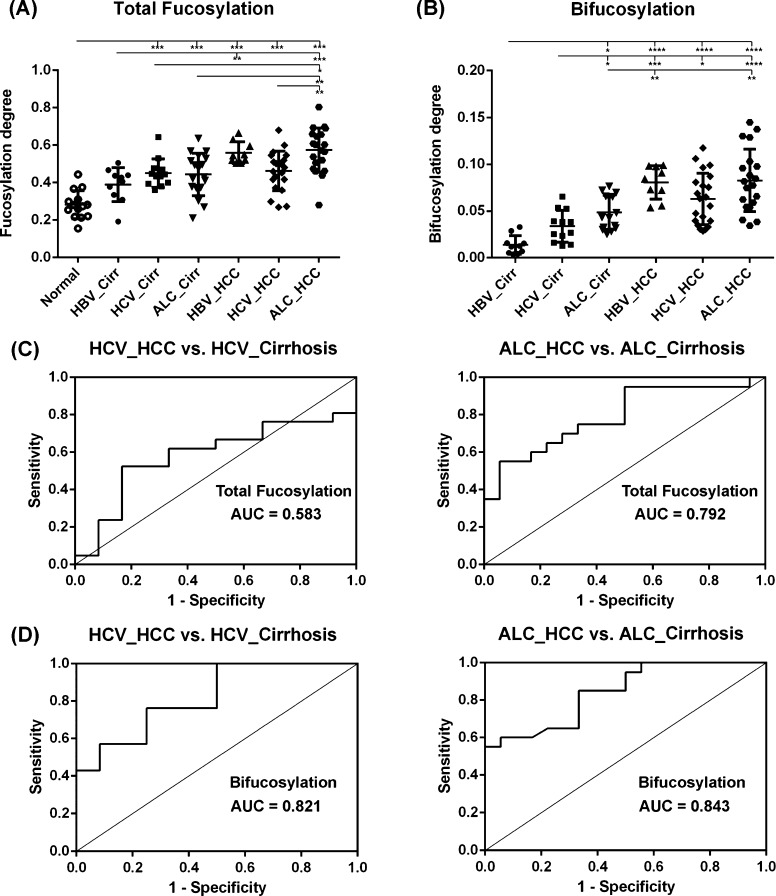Figure 6.
(A) Scatter plot of the total fucosylation degree of haptoglobin N-glycans in healthy subjects and cirrhosis and HCC patients induced by HBV, HCV, and ALC, respectively. The total fucosylation levels are distinctly elevated in HCC and cirrhosis patients compared to that in healthy controls. The elevated fucosylation degree can discriminate HCC from cirrhosis patients induced by HBV infection (p < 0.01) or alcohol abuse (p < 0.01), but it cannot do so in the HCV-related HCC and cirrhosis cases. (B) Scatter plot of the bifucosylation degree of haptoglobin N-glycans in cirrhosis and HCC patients of each etiology, which shows a significantly increased bifucosylation level in HCC of all etiologies compared to that in the corresponding cirrhosis. Notably, the bifucosylation level is distinctly elevated in all HBV-related HCC patients compared to that in HBV-related cirrhosis in this sample set (p < 0.0001), suggesting good diagnostic power of bifucosylation degree in discriminating these liver diseases. (C, D) Receiver operating characteristics (ROC) curves of the total fucosylation degree (C) and bifucosylation degree (D) to differentiate HCC from cirrhosis cases induced by HCV and ALC, respectively (*, p < 0.05; **, p < 0.01; ***, p < 0.001; ****, p < 0.0001).

